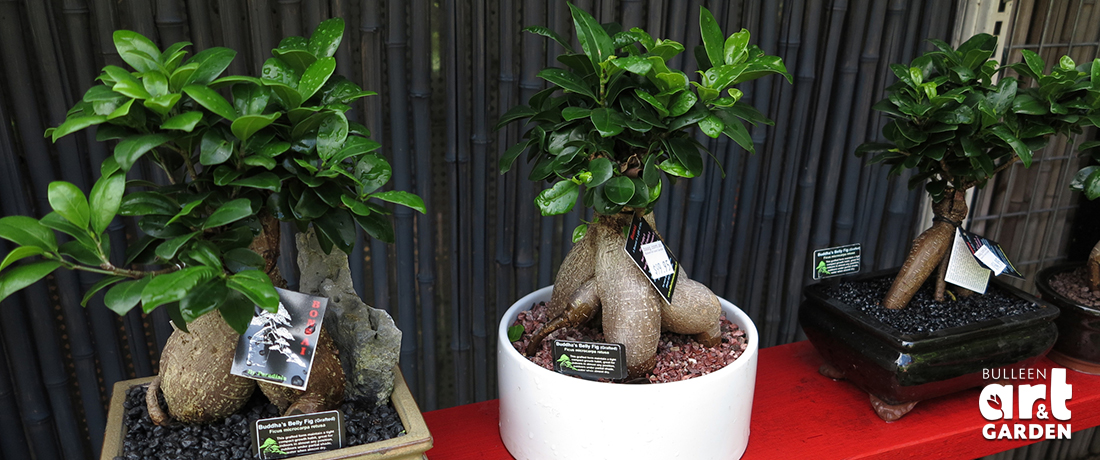
 Important note about plant availability. Important note about plant availability.There are hundreds of factsheets on our website provided for your information. Not all plants will be available at all times throughout the year. To confirm availability please call (03) 8850 3030 and ask for the nursery. |
The art of Bonsai can be traced back as far as the 6th Century AD. Far more than simply miniaturisation, a Bonsai should capture a moment in nature. Requiring skill, effort and an appreciation of the subtleties of each tree, the results can be truly breathtaking . It may seem daunting when you first start reading about it, but providing you remember to carry out the routine maintenance it really is quite straight forward.
Creating
To create the full miniaturisation effect you need to establish a dense fine fibrous root system. The fineness of the roots signal the tree to produce smaller leaves and the dense system allows allows the tree to absorb sufficient water and nutrients to develop a good thick canopy. The shallow pots associated with bonsai allow sufficient airflow to this dense root system, and good permeable potting mixes ensure adequate drainage. Choose a pot style that will harmonise with the tree characteristics
Position
Keep on a shelf outside in an open situation, but give some protection from hot winds and afternoon sun in
summer. Bonsai brought inside for decoration should be placed in an airy, well-lit situation and should remain
indoors for only 2 or 3 days at a time.
Watering
Inspect your bonsai every day and water them when the surface soil is dry. Once a day is usually often enough, but on hot or windy days watering two, or even three times a day may be needed. Water thoroughly, ensuring that the water penetrates to the centre of the root ball. In summer a dunking once a week is helpful. Less watering is required in winter, but remember – plants can still dry out in cold weather, especially if it is windy.
Fertilising
One of the soluble fertilisers used at half the recommended strength once a month from October till March will help to keep plants healthy. Remember to water before applying fertiliser. Another alternative is to push one pellet of organic slow release fertiliser in the corner of the pot. This will supply enough fertiliser for 6 months.
Training
Wiring is used to bend the trunk and branches to the required shape. Gentle bending will indicate the correct wire to be used. Tender barked trees should be wired with paper wrapped wire to protect the bark. Deciduous trees are wired after their leaves have matured in early summer. Remove the wires in autumn to avoid wounding the bark.
Pruning
During the growing season pruning is essential to develop and maintain the shape of the tree.
Deciduous trees and broad-leafed evergreens: When growing tips have made 4 to 5 new leaves pinch or cut back leaving one or two new leaves.
Conifers: Pinch back new growth just before it hardens, leaving only a few rows of new needles at the base of the shoots.
Repotting
Most deciduous trees need re potting every year in late winter before the new leaves appear. Re-pot conifers in spring or autumn every 2-3 years, 5 years for older trees. Remove approximately one third of the soil from the rootball and prune the exposed roots. Re-pot using a good, loose potting mix, ideally Bonsai potting mix. Water well and keep in the shade for several days.
Calendar of bonsai care
January: Check and remove wires, water and feed regularly.
February: Keep watering but stop feeding, reduce trimming.
March: Little growth, only nitrogen-free fertiliser.
April: Deciduous trees lose leaves, water if necessary.
May: Remove wiring carefully, check all plants for pests.
June: Water only if necessary, do not feed.
July: Dormant period for most trees and plants.
August: Prune hardy deciduous trees. Prepare for re potting.
September: Wire deciduous trees and re pot most trees.
October: Prune most trees, end re potting and watch insects.
November: Start feeding and light trimming. Water regularly.
December: Water and feed regularly, trim and watch the bugs.
